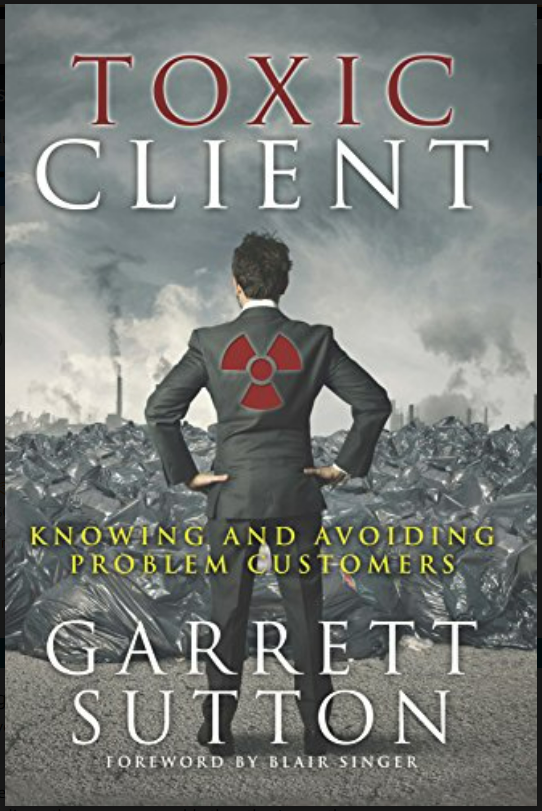It’s an unavoidable reality of owning a business: the problem customer. Arguably, even though we struggle with and (often) despise our problem customers, it can be said that they’re one of the most valuable assets that we can have in our business.

So how, you may ask, can a problem customer be an asset?
Consider your business career. It’s certain that we’ve enjoyed all the uneventful clients that we’ve come across, relishing in the monotony of being able to do our jobs without any drama. But, if you look back on all the things that you’ve learned throughout your career, all those tips and tricks that you now employ without even thinking about them, the odds are that you didn’t learn them from your uneventful, no-drama clients.
No, it’s likely that your problem clients were the ones that taught you all those valuable lessons. Get all your paperwork done properly so that you cover your butt? Probably learned that the hard way, from a problem client. Keep records of everything that happens in your business? Hard lesson from a problem client likely started you down that road. Make sure you get paid when you are supposed to? Again, a (cheapskate) problem client helped put that policy in place.
When we do business with problem clients, and deal with the difficulties they bring, that’s often when we learn our most valuable lessons. We figure out all those important things that we then implement to protect our business (and ourselves) from similar situations in the future. While an easy client is a joy to work with, the odds are that you’re not learning anything new unless you’re being challenged. The status quo of a “regular” client really doesn’t present much of a challenge to our business.
We seldom learn much from someone with whom we agree.
Mokokoma Mokhonoana
Working out at the gym to help stay fit? It’s when you’re stressing your muscles, pushing them past their comfort level, that you’re getting stronger. In much the same way, those challenges to your belief system and current way of doing things helps to make you smarter. Doing something that’s different from your regular routine helps you become more agile, increasing your skill level in your business. And working with a difficult client helps you become a better business owner.
Now it certainly doesn’t seem like a benefit while you’re in the thick of it, trying to figure out how to deal with that problem client. When we’re in the moment, most of us just want to discover those magic words that will make them disappear from our lives!
Just tell me what the hell you want so I can make you go away, already!
With the benefit of hindsight, however, looking back on those problem clients enables you to see all the valuable lessons that they’ve taught you.
Think of all the times when we were struggling to find a way to deal with a problem, trying to figure out a way to diffuse the situation without being unprofessional (and telling them exactly what you thought about them and their “problem.”) Then think of all the procedures that you now have in place to prevent a similar situation from arising. Without that problem client, you never would’ve learned that valuable lesson, and would still be susceptible to that same type of situation.
Bad times have a scientific value. These are occasions a good learner would not miss.
Ralph Waldo Emerson
Now, I’m certainly not saying that we should start out each day hoping that we cross paths with a difficult client. If dealing with pain-in-the-ass clients was a daily occurrence, most of us would probably be looking for a new industry in which to work. However, there is definitely some benefit to having a certain level of discomfort in your life.
In our business (as well as our personal lives), most of our interactions are the same every day. Not much variety, just the same issues, the same questions, the same routines over and over and over again. I teach my home inspection students that their job will consist of repeating the same routines and answering the same questions about 90% of the time. Once you become proficient at your regular routine, most of your day is spent coasting downhill; repeating the well-worn routines that you’ve developed over the years. Get those routines down, and most of your job is a cakewalk.

It’s that 10% variance that often does us in. Some people are able to deal with the variance, and some people aren’t. Out of those businesses that can conquer the 90% threshold, the ones that are really successful, the businesses that people immediately think of when their industry is mentioned in conversation, are the ones that figure out how to successfully navigate the 10%.
For better or for worse, it’s how you deal with that 10%, those inevitable problem clients, that ends up determining your level of success.
We all need some variety in our lives. If everything was always the same, we would quickly grow weary of our jobs (and our lives.) Burn-out among workers is real, and typically has the biggest effect on people whose jobs are the most monotonous. Put the same widget in the same hole 1000 times each day, 5 days a week, 52 weeks a year, and you’ll soon be ready to snap. The human animal craves (at least some level of) variety. We all need at least a little diversity to remind us that today is different from yesterday. We don’t want to re-live Groundhog’s Day every day of our lives.
It’s the little things, that small 10% variance each day, that keeps you on your toes; that keeps you growing; that forces you to keep learning. It’s tremendously important to be on the lookout for and actively seek those opportunities in your job.

And learn to love those problem clients. Whether you want to or not.
Would you like to get an email every Friday where we share the newest things we’ve discovered about home inspections? CLICK HERE to sign up.
Want to be an Influencer in Your Field? Share This Post!
Thanks, Joe


